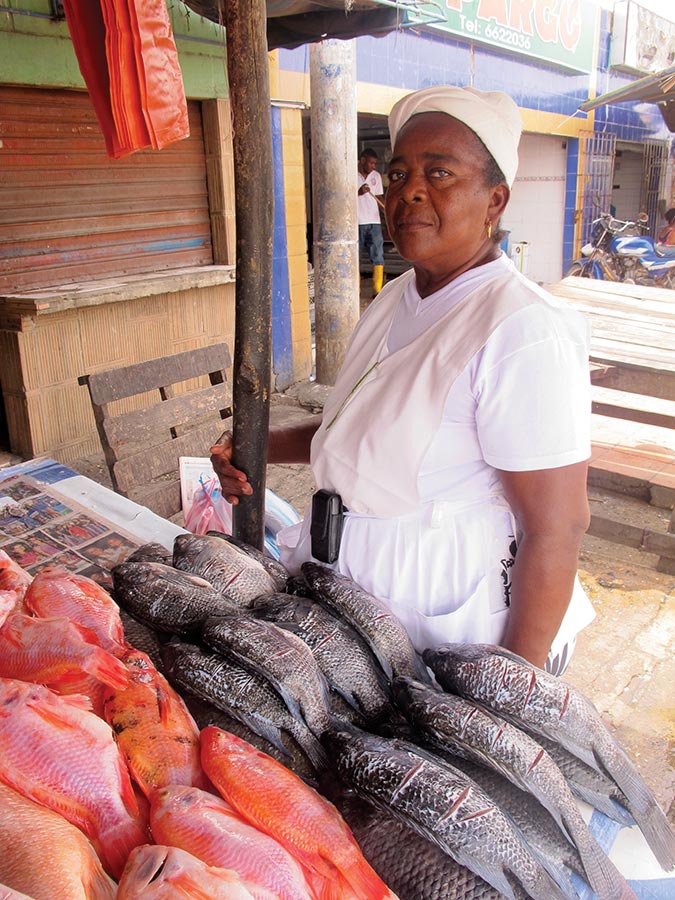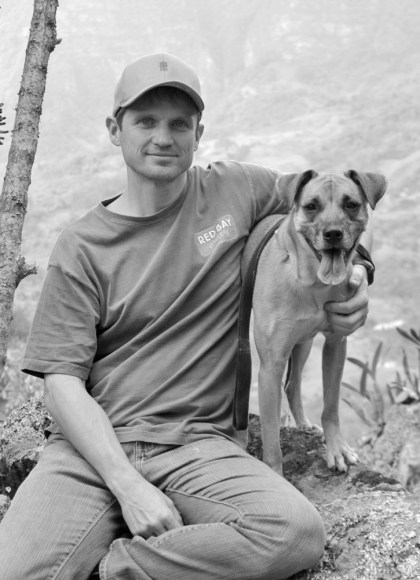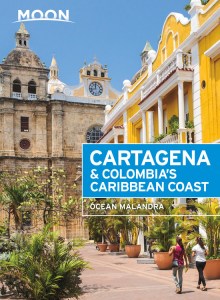Unique and Casual Shopping in Cartagena
Shopping in Cartagena runs the gamut from a familiar modern mall setting to sprawling marketplaces, making it easy to find everyday essentials or more unique purchases and experiences.

Shopping Centers and Malls
The bazaar-like Centro Comercial Getsemaní (Cl. 30 No. 8B-74, tel. 5/664-2508, hours vary daily) shopping center doesn’t really cater to tourists. It’s made up of hundreds of small mom-and-pop kiosks that sell just about anything: computer supplies, notebooks, beauty supplies, handicrafts, and knickknacks. You can probably get your nails done here as well.
Centro Comercial Caribe Plaza (Pie de la Popa, Cl. 29D No. 22-108, tel. 5/669-2332, 10am-8pm Mon.-Thurs., 10am-9pm Fri.-Sun.) is an upscale modern mall near the Castillo de San Felipe with numerous clothing and shoe stores, movie theaters, and a food court.
Mercado de Bazurto
Definitely not for the faint of heart, a visit to the sprawling, grimy Mercado de Bazurto (Av. Pedro Heredia, 5am-4pm daily) is the best way to connect with the real Cartagena. On the periphery of the market be sure to peruse the seafood area, where women sell the catch of the day to restaurant owners. Be amazed at all the different kinds of fruit on offer. To get to the market, take a bus from Avenida Santander (COP$1,500) or a taxi (COP$7,000 from the Old City).

Another way of visiting the market is the Mercado de Bazurto Tour (tel. 5/660-1492, cell tel. 315/655-4120, COP$250,000 pp), organized by Jorge Escandón, the owner of La Cevichería and Bazurto Social Club. On the tour, you’ll learn about the ingredients that make Caribbean cuisine special, particularly the seafood and exotic fruits. You’ll also meet the vendors who have worked their entire lives behind a stall at the market. Afterwards you’ll head to a beach house and have a gourmet lunch featuring lobster and other delicacies prepared by Jorge and his staff.
Handicrafts
The most historic place to pick up some Colombian handicrafts is at Las Bóvedas (extreme northeastern corner of the wall, 9am-6pm daily). Once a military storehouse, today it’s the place to buy multicolored hammocks and all kinds of Colombian artesanías of varying quality.
For high quality handicrafts you’re better off going to Artesanías de Colombia (Centro de Convenciones, Local 5, tel. 5/660-9615, 10am-7pm Mon.-Sat.). This is a government entity whose mission it is to promote Colombian handicrafts and craftspeople. This store sells handicrafts from across the country but specializes in masks from the Carnaval de Barranquilla, woven mochilas (handbags) from indigenous groups in the Sierra Nevada, and the colorful embroidery of molas from indigenous groups in the Darien Gap region near Panama.

Jewelry
Colombian emeralds are considered to be some of the finest in the world. Many jewelers in the Centro Histórico sell emerald jewelry and can custom make jewelry for you. One of the most highly regarded jewelers is Galería Cano (Plaza Bolívar No. 33-20, Local 679, tel. 5/664-7078, 9am-7pm Mon.-Fri., 10am-7pm Sat.). They specialize in gold, silver, and emerald jewelry. Cano has other locations in the airport and at the Hotel Santa Clara, as well as in Bogotá.
Cigars
In Cartagena, touches of Cuba are found everywhere: mojitos, music, and, too, the cigars. At La Cava del Puro (Cl. de las Damas No. 3-106, tel. 5/664-9482, 9am-8pm Mon.-Sat., 10am-8pm Sun.) they don’t sell just any old stogie; here the cigars come from Havana and are of the best quality. Smoking is not only permitted here, but in fact promoted. Sometimes a little whiskey is even served to perusing clients. Note that cigars with labels that say “Hecho in Cuba” may be confiscated by customs agents upon arrival in the United States. Cigars that come from the Barichara area in the Colombian department of Santander are quite good and much cheaper, and you can take them across borders with no questions asked.
Newsletter Signup
By clicking ‘Sign Up,’ I acknowledge that I have read and agree to Hachette Book Group’s Privacy Policy and Terms of Use
Clothing
Along Calle Santo Domingo there are several boutiques of top Colombian designers. Bogotana Bettina Spitz (Cl. de la Mantilla No. 3-37, tel. 5/660-2160, 11am-1pm and 2pm-8pm daily) sells casual, beach, and formal clothes for women, as well as an array of accessories, shoes, and some men’s items. Jon Sonen (Cl. Ricaurte No. 31-56, tel. 5/664-1092 or 5/660-4682, 10am-8pm Sun.-Thurs., 10am-9pm Fri.-Sat.) is a Colombian label specializing in menswear, with stores throughout the country.
You’ll notice that guayabera shirts are what men wear around Cartagena, to restaurants and events. It’s possible to spend a fortune on them, but if you want to blend in without busting your budget, go to Arte y Creaciones (Cl. Don Sancho No. 36-94, cell tel. 320/583-9091, noon-8pm Mon.-Fri., 10am-8pm Sat.-Sun.), where a cotton guayabera will run you about COP$55,000. Another option for cheap guayaberas is Centro de Artesanías de San Jacinto (Cl. de la Iglesia No. 35-59, tel. 5/660-1574, 9am-8:30pm daily).
Books
Abaco Libros (Cl. 36 No. 3-86, Cl. de la Mantilla, tel. 5/664-8290, 9am-9pm Mon.-Sat., 3pm-9pm Sun.) is a small book shop/café with a variety of books on Cartagena, top Colombian novels, and a selection of magazines, classics, and best sellers in English. Librería Nacional (Cl. Segunda de Badillo No. 36-27, tel. 5/664-1448, 8:30am-12:30pm and 2pm-6:30pm Mon.-Fri., 8:30am-5pm Sat.) is a chain bookstore with shelves full of Colombian and Spanish-language books, but not much in the way of books in English.
Newsletter Signup
By clicking ‘Sign Up,’ I acknowledge that I have read and agree to Hachette Book Group’s Privacy Policy and Terms of Use
Pin it for Later


